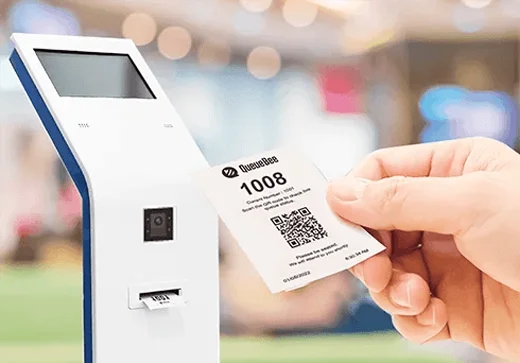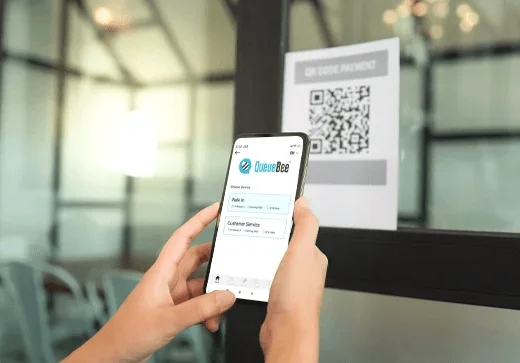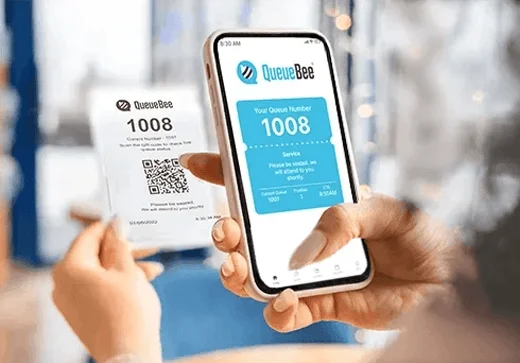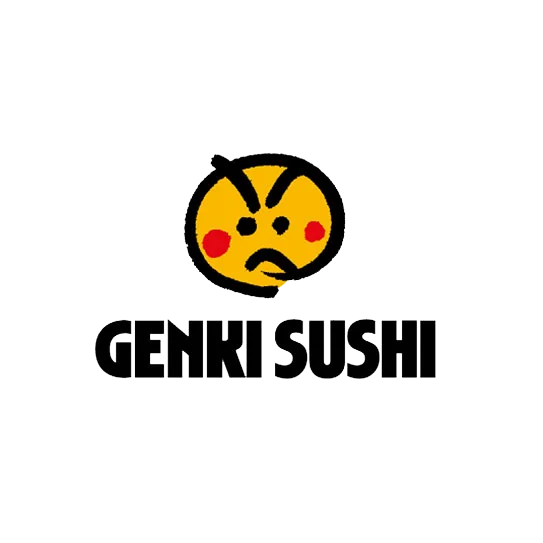We’d meet Singaporean business owners who’ve made it past the survival stages, and their businesses are growing rapidly with steady streams of customers. Most of them face a new bottleneck at this stage – managing incoming customers when their business is operating at maximum capacity.
A temporary solution is to ask customers to queue up and wait to be served. While queueing seems part of the Singapore culture, according to the Singapore Business Review, long wait times correlate with lower satisfaction and customer loyalty in the Singaporean F&B and healthcare sectors.
Singaporean business owners face a double-edged sword. On one hand, there’s a tangible opportunity to generate more revenue as the demand is already available, but is it worth investing money to capture this opportunity? If they don’t capture the opportunity, it also poses a potential cost to the business. Staff may face the added burden of managing queueing customers during peak hours. However, having more responsibilities than they can handle effectively leads to slower customer response time and a higher likelihood of mistakes. As a result, customer service may deteriorate.
Some of our Singaporean clients have tried to solve this by hiring more staff during peak hours and expanding their business premises to include waiting areas. But solely relying on staff has its limits. For example, self-served customers who can register by scanning a QR code are more efficient than having staff manually register customers for a queue. Manual registrations also have limited queue information – you can’t accurately get data on the average queue time per customer. It's why our clients come to us. They needed a better way of managing queues, and queue management system can solve this.


Physical queue management digitalizes the business operations required for managing queueing customers. It does this by automatically generating queue numbers and calling them sequentially. When a customer arrives at the business premises, customers can collect a queue number from the ticket dispenser and wait for their turn in the waiting area. The waiting area is often accompanied by display screens showing the current and rolling queue numbers as customers wait for their numbers to be called.
The key feature of a physical queue management system is that it involves printing a physical queue ticket. We offer portable touchscreen ticket dispensers if you require a simple ticket printer. Alternatively, clients with more complex registration processes, such as online appointments and check-ins, prefer our self-service kiosks. Both ticket dispensers and kiosks have pre-installed queue management software with customizable user interfaces to match your brand colors and preferred languages.
A virtual queue management system allows customers to queue remotely without a physical ticket. Customers can scan the QR code to join the virtual queue. Once their registration has been confirmed, they will receive a digital copy of their queue ticket through email or SMS. They will be notified when their turn is approaching.
One benefit of virtual queues is that customers can easily check the queue status from their phones, so they don’t need to wait at the designated waiting area. Digital queue tickets often provide more details about the customer’s queue status, such as real-time updates on their position in the queue and the estimated queueing times.


Hybrid queue management is a combination of physical and virtual queues. It offers the best of both worlds. Less tech-savvy customers, like elderly people, may prefer to collect their queue number from a ticket dispenser, while tech-savvy customers may prefer to go paperless with virtual queue tickets.
Click here to book a free demo or learn more about our queue management solutions and features.
There are two types of queue tickets: paper tickets and digital tickets. Customers visiting your premises can get a paper ticket from the standing kiosks or tabletop ticket dispensers. If they’ve made prior appointments, they can enter their phone numbers or scan the QR code from their confirmation email to check in upon arrival at the business premises. Customers can also join the queue remotely by registering for a ticket via the customer portal or mobile app or scanning the QR code on the business premises. If you’re using a hybrid queue management solution, customers can choose between paper and digital tickets depending on their preferences and circumstances.
Once a customer has collected their queue tickets, they may wait in the on-site waiting area. Customers can check the current queue status and the upcoming queue numbers on digital signage, which can range from LED/LCD displays and standee kiosks to video walls. It is connected to the queue management system to allow real-time updates of the queue status. Aside from that, our content management system allows you to have full control over the displays to schedule custom content on the screens.
When a staff member becomes available to serve the next customer, the agent can use the virtual call terminal to call the next queue number sequentially or randomly. The customer with the corresponding queue number will then reach the service point. Agents may also transfer customers to different service points depending on your customer’s needs.
Once a customer has been served, businesses can set up a feedback collection system by scanning the QR code on their queue ticket or via the customer feedback terminal. Customers can quickly rate their experience with the service so businesses can gauge customer satisfaction. With our customer feedback software, you can create longer questionnaires with custom questions for customers to fill out to better understand your customers.

ION Mall in Singapore harnesses QueueBee's Queue Management & Customer Feedback system to optimize customer service in their retail environment. This technology ensures efficient crowd control and collects valuable customer feedback, elevating the shopping experience to new heights.

Genki Sushi employs QueueBee's Queue Management & Customer Portal, revolutionizing the way customers experience dining. This system efficiently manages customer flow, reducing wait times and offering a streamlined dining experience.

Love, Bonito at 313 @ Somerset, utilizes QueueBee's Queue Management system in their fitting rooms. This strategic implementation reduces wait times and improves the overall shopping experience, especially during busy hours and seasonal rushes.

Young Living incorporates QueueBee's Queue Management system for managing physical queues effectively. This system streamlines customer flow in their retail spaces, providing an organized and efficient shopping experience for their wellness products.
Elevate your customer service with QueueBee's tailored Queue Management System. From Physical to Virtual to Hybrid queue solutions, streamline your customer flow, boost efficiency, and elevate customer satisfaction effortlessly


Security | Quality | Reliability